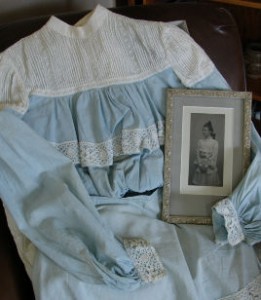Writing Nostaglia
By Carla Stewart
For fun, I want you to relax for a moment and think back to your childhood.
What perfume did your mom wear when you were a child? Do you ever catch a whiff and feel like you’ve been hugged?
Do you remember the song they were playing at your first dance? Were you on the sidelines waiting for someone . . . anyone to ask you to dance? Or were you the one the guys stood in line for, waiting their turn?
When you were younger, did you ever lay on a blanket under the nighttime stars
and trace the Big Dipper with your finger?
Taking a reader on a journey where the memory is engaged through sensory detail is what nostalgia is all about. Webster’s defines nostalgia as: 1) the state of being homesick; 2) a wistful or sentimental yearning for a return to the past.
Just as a child says, “Mommy, tell me the story of when I was a baby,” adults also
enjoy an occasional trip back to the age of innocence and the simplicity of childhood. Whether we have wonderful memories or tragic ones, it was still a time when we felt deeper and more passionately about everything. It is the time when we were literally taking the first steps to becoming who we are today.
A writer I met recently said it like this. “Life was good, but never easy.” Yes, there
were challenges. Adolescence was just as traumatic then as it is today. Who doesn’t remember the acne? Fitting in with the “in” crowd? Your first driving lesson? Or your first car? What it felt like to get a first kiss? I suspect there’s a bit in all of us that is homesick for the “good old days.”
These are the things I love to write about. My goal in writing nostalgic fiction is to
provide the reader a “getaway” from today’s hectic pace one story at a time. Story telling techniques are ageless, but there are a few specifics you might consider if you want to write nostalgia.
There must be a reason for placing your story in a certain year or decade.
To simply place a story in a past decade because it sounds cool is not enough.
You need a backdrop of world events or social customs that are unique to the era.
Some examples from the 1950s and 60s might be the fear of communism, man first entering space, the Civil Rights movement, or the emergence of a new sound in music (Elvis, the Beatles). The backdrop doesn’t have to be a part of the plot but will give texture to your story and make it ring true. Everything else springs from this so choose your era and events wisely.
Research is vital. Even if you grew up in the age you’re writing about, it’s important to double check the facts: the year a song first came out, what was on TV at the time, brand names, and products. It’s surprising how many everyday items we use have been developed in the last thirty or forty years. If you’re not accurate, more than likely, someone reading your story will spot a mistake and tell you about it. Building trust with your reader should be a priority.
Note: This is true no matter what you write. I once hurled a book by a very famous author across the room for a blatant error that would have taken thirty seconds to research. Don’t be lazy about research.
Vivid, specific details that elicit emotion.
This is probably my favorite part of writing nostalgia. Sights, sounds, and smells that capture the flavor of the era draw your reader in. I use a lot of music in my writing because nothing nails an era like its particular “sound.” Smell can evoke memories of a farmhouse kitchen or a trip to the lake or the cologne of a favorite relative. Hair styles and clothing provide visual cues that can illicit emotion—the torture of sleeping in brush rollers or the twirl of a poodle skirt at a sock hop.
Language and slang.
Certain phrases come and go and can be good markers for
an era. You hardly ever hear anyone today say, “cool cat” or “the cat’s pajamas.”
Likewise, you should refrain from having your vintage characters say modern
phrases like, “Awesome” or “That was phat.” (disclaimer: these may not be the “in” phrases today but were in the recent past, so I’m just a saying . . . ) Language and slang, can create a doorway to the time period as well as give regional distinction to your writing.
A few resources to help you with phrases and slang:
Online Etymology Dictionary
Meanings and Origins of Phrases, Sayings, and Idioms
Merriam Webster’s Collegiate Dictionary: Eleventh Edition – Gives the date of origin of most words
Most of all, have fun. I love writing nostalgia, not just because I can spend time with characters in the era when I grew up, but because it’s a challenge to get it right. The ultimate sweet reward is having a reader say, “How did you know what my childhood was like?” or “I felt like I was there and didn’t want to leave.”
Isn’t that the goal of all good fiction? To transport the reader into our fictive dreams and give them an emotional experience?
In what era did you grow up?
What is your favorite memory from that time?
Would you go back . . . even for just a day?
